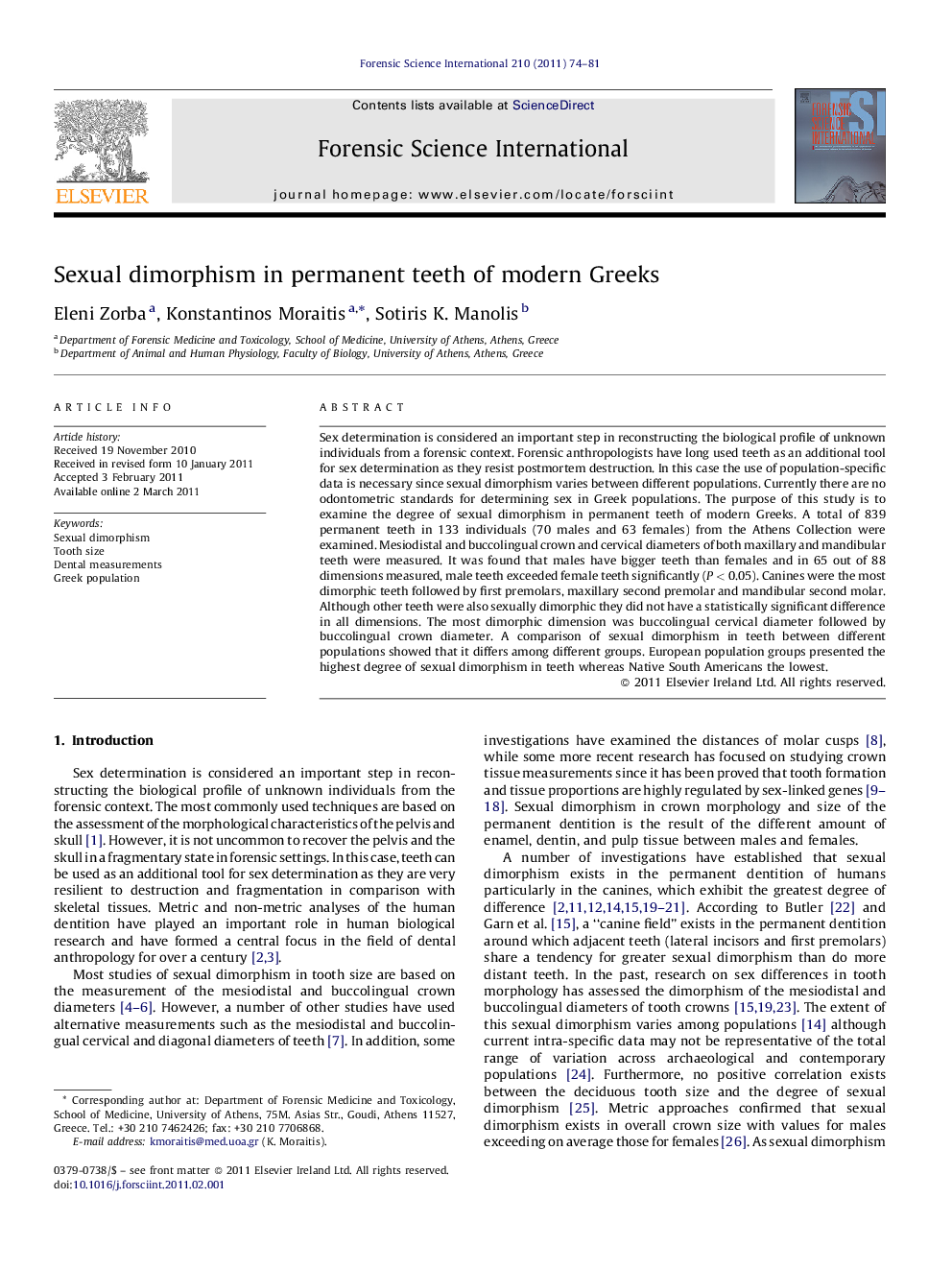| Article ID | Journal | Published Year | Pages | File Type |
|---|---|---|---|---|
| 96617 | Forensic Science International | 2011 | 8 Pages |
Sex determination is considered an important step in reconstructing the biological profile of unknown individuals from a forensic context. Forensic anthropologists have long used teeth as an additional tool for sex determination as they resist postmortem destruction. In this case the use of population-specific data is necessary since sexual dimorphism varies between different populations. Currently there are no odontometric standards for determining sex in Greek populations. The purpose of this study is to examine the degree of sexual dimorphism in permanent teeth of modern Greeks. A total of 839 permanent teeth in 133 individuals (70 males and 63 females) from the Athens Collection were examined. Mesiodistal and buccolingual crown and cervical diameters of both maxillary and mandibular teeth were measured. It was found that males have bigger teeth than females and in 65 out of 88 dimensions measured, male teeth exceeded female teeth significantly (P < 0.05). Canines were the most dimorphic teeth followed by first premolars, maxillary second premolar and mandibular second molar. Although other teeth were also sexually dimorphic they did not have a statistically significant difference in all dimensions. The most dimorphic dimension was buccolingual cervical diameter followed by buccolingual crown diameter. A comparison of sexual dimorphism in teeth between different populations showed that it differs among different groups. European population groups presented the highest degree of sexual dimorphism in teeth whereas Native South Americans the lowest.
